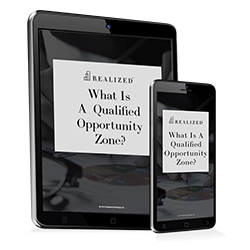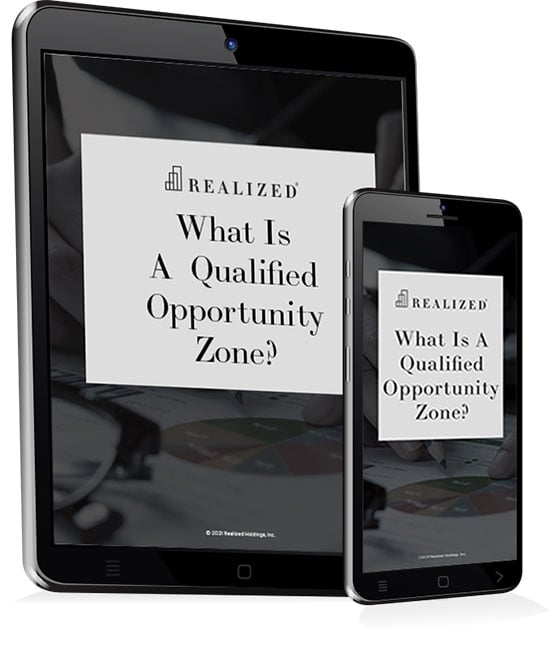
Now that we’re almost four years into the Opportunity Zone Program, we know what it’s about. We understand that it was passed as part of the Tax Cut and Jobs Act of 2017, and that it’s in place as a way to spur economic development within federally designated low-income communities (i.e., Qualified Opportunity Zones, or QOZs).
But even with this understanding, questions still exist. One such question is what entities can actually invest in QOZs. Such as hospitals or healthcare systems.
It could be said that hospitals would be ideal QOZ investors. Community well-being is important to economic revitalization, and healthcare systems are well-equipped to help in this area. Furthermore, many hospitals and systems are interested in setting up shop in new QOZ markets to facilitate healthcare delivery.
But they can’t invest directly into Qualified Opportunity Zones. Nor can they really invest in Qualified Opportunity Funds (QOFs) unless their investments consist of capital gains.
A Repeat Lesson
The goal of the Opportunity Zone program is to encourage investors to use their capital gains from the sale of assets and direct those gains toward Qualified Opportunity Funds. In response, investors can benefit from tax deferrals and also potentially avoid paying capital gains taxes on income from the investment, depending on the length of the hold.
So, unless hospitals are willing to invest capital gains from the sale of real estate or equipment into a Qualified Opportunity Zone, these entities can’t directly invest in one. But this doesn’t mean that these healthcare systems can’t participate in the program.
For one thing, U.S. Housing and Urban Development announced in 2019 that it would give priority to Section 232 applications received for facilities located in QOZs. HUD also indicated that it would reduce application and exam fees for Section 242 and Section 232 transactions for Opportunity Zone facilities.
The Section 232 program provides mortgage insurance on loans that help finance nursing homes, assisted living facilities, and board and care facilities in Opportunity Zones, while Section 242 provides the same mortgage insurance for acute-care hospitals.
The above was meant to encourage healthcare building renovation and development in QOZs. But the question arises as to where funds might come from for these activities.
Hospital Involvement in QOZs
According to a Drexel Company newsletter, hospitals and healthcare systems do have the motivation to support and/or invest in an opportunity zone. But this is only a start. The capital that might be offered through a QOF likely won’t be enough to make a meaningful impact on healthcare real estate development. This is because the Opportunity Zone Program is federally based and should be paired with local funding sources for greater impact.
How, then, can hospitals and healthcare systems boost QOZ funding? There are a few ways.
- Encourage their network of investors to invest their capital gains into QOFs that will, in turn, develop medical office buildings or expand hospital facilities.
- Offer matching grants for investments in hospital-focused QOFs.
- Form their own QOFs in the following ways:
- Developing a QOF corporation
- Creating a JV partnership, held by a hospital and foundation, or hospital and developer
- Establishing a QOF partnership with multiple healthcare providers
Healthcare and Economic Revitalization
To summarize, the Opportunity Zone Program could be a viable option to help healthcare systems improve delivery to economically challenged areas. But many times, these systems can’t directly invest in Qualified Opportunity Funds. With a little planning and foresight, however, hospitals and healthcare entities could make use of QOFs and other funding, to help improve community well-being and revitalization.
This material is for general information and educational purposes only. Information is based on data gathered from what we believe are reliable sources. It is not guaranteed as to accuracy, does not purport to be complete and is not intended to be used as a primary basis for investment decisions. It should also not be construed as advice, meeting the particular investment needs of any investor. There are material risks associated with investing in QOZ properties and real estate securities including liquidity, tenant vacancies, general market conditions and competition, lack of operating history, interest rate risks, the risk of new supply coming to market and softening rental rates, general risks of owning/operating commercial and multifamily properties, short term leases associated with multi-family properties, financing risks, potential adverse tax consequences, general economic risks, development risks, long hold periods, and potential loss of the entire investment principal.



